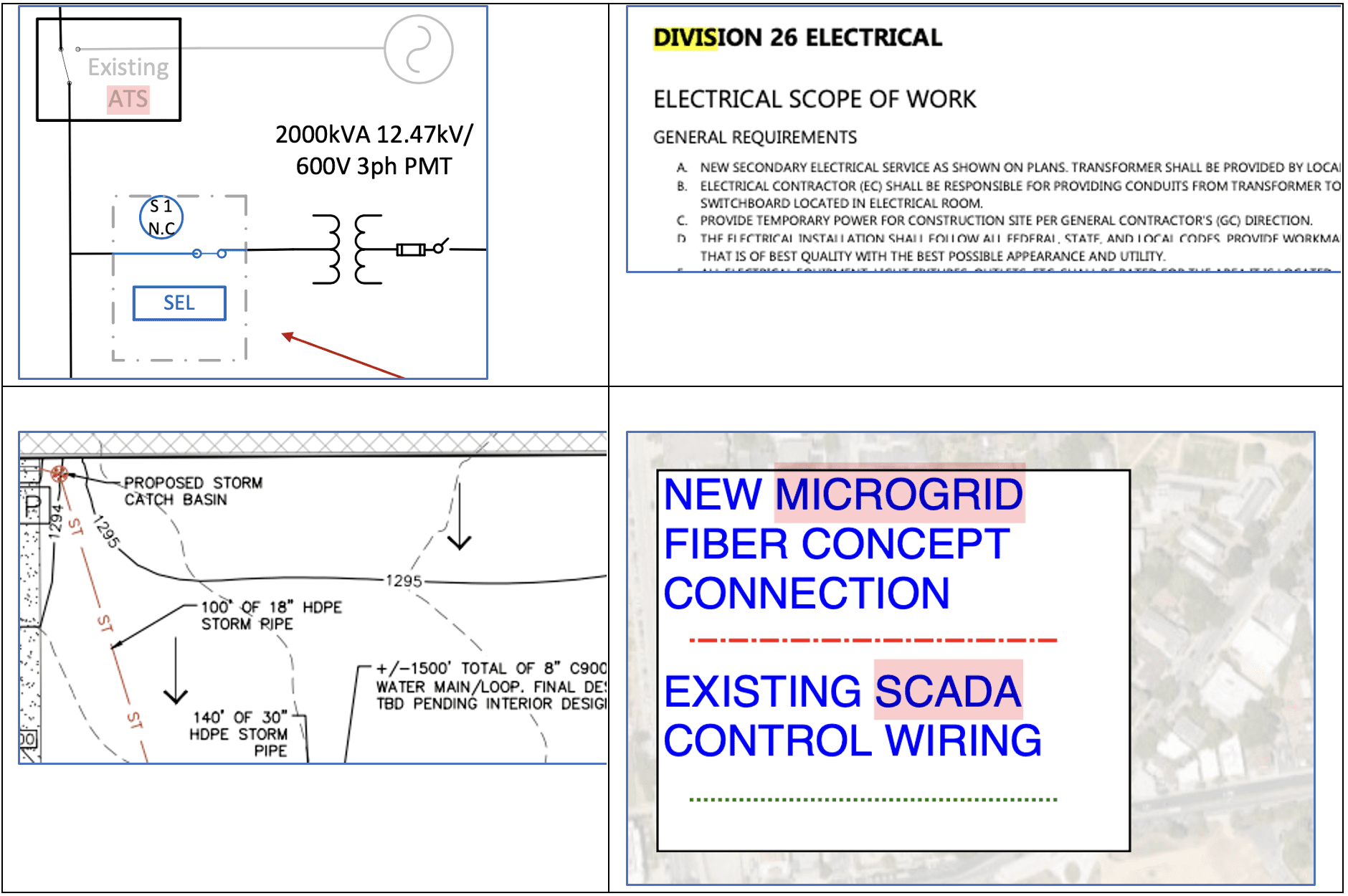How Schneider Electric uses Amazon Bedrock to identify high-potential business opportunities
This post was co-written with Anthony Medeiros, Manager of Solutions Engineering and Architecture for North America Artificial Intelligence, and Adrian Boeh, Senior Data Scientist – NAM AI, from Schneider Electric.
Schneider Electric is a global leader in the digital transformation of energy management and automation. The company specializes in providing integrated solutions that make energy safe, reliable, efficient, and sustainable. Schneider Electric serves a wide range of industries, including smart manufacturing, resilient infrastructure, future-proof data centers, intelligent buildings, and intuitive homes. They offer products and services that encompass electrical distribution, industrial automation, and energy management. Their innovative technologies, extensive range of products, and commitment to sustainability position Schneider Electric as a key player in advancing smart and green solutions for the modern world.
As demand for renewable energy continues to rise, Schneider Electric faces high demand for sustainable microgrid infrastructure. This demand comes in the form of requests for proposals (RFPs), each of which needs to be manually reviewed by a microgrid subject matter expert (SME) at Schneider. Manual review of each RFP was proving too costly and couldn’t be scaled to meet the industry needs. To solve the problem, Schneider turned to Amazon Bedrock and generative artificial intelligence (AI). Amazon Bedrock is a fully managed service that offers a choice of high-performing foundation models (FMs) from leading AI companies like AI21 Labs, Anthropic, Cohere, Meta, Stability AI, and Amazon through a single API, along with a broad set of capabilities to build generative AI applications with security, privacy, and responsible AI.
In this post, we show how the team at Schneider collaborated with the AWS Generative AI Innovation Center (GenAIIC) to build a generative AI solution on Amazon Bedrock to solve this problem. The solution processes and evaluates each RFP and then routes high-value RFPs to the microgrid SME for approval and recommendation.
Problem Statement
Microgrid infrastructure is a critical element to the growing renewables energy market. A microgrid includes on-site power generation and storage that allow a system to disconnect from the main grid. Schneider Electric offers several important products that allow customers to build microgrid solutions to make their residential buildings, schools, or manufacturing centers more sustainable. Growing public and private investment in this sector has led to an exponential increase in the number of RFPs for microgrid systems.
The RFP documents contain technically complex textual and visual information such as scope of work, parts lists, and electrical diagrams. Moreover, they can be hundreds of pages long. The following figure provides several examples of RFP documents. The RFP size and complexity makes reviewing them costly and labor intensive. An experienced SME is usually required to review an entire RFP and provide an assessment for its applicability to the business and potential for conversion.

Sample request for proposal (RFP) input data
To add additional complexity, the same set of RFP documents might be assessed by multiple business units within Schneider. Each unit might be looking for different requirements that make the opportunity relevant to that sales team.
Given the size and complexity of the RFP documents, the Schneider team needed a way to quickly and accurately identify opportunities where Schneider products offer a competitive advantage and a high potential for conversion. Failure to respond to viable opportunities could result in potential revenue loss, while devoting resources to proposals where the company lacks a distinct competitive edge would lead to an inefficient use of time and effort.
They also needed a solution that could be repurposed for other business units, allowing the impact to extend to the entire enterprise. Successfully handling the influx of RFPs would not only allow the Schneider team to expand their microgrid business, but help businesses and industries adopt a new renewable energy paradigm.
Amazon Bedrock and Generative AI
To help solve this problem, the Schneider team turned to generative AI and Amazon Bedrock. Large language models (LLMs) are now enabling more efficient business processes through their ability to identify and summarize specific categories of information with human-like precision. The volume and complexity of the RFP documents made them an ideal candidate to use generative AI for document processing.
You can use Amazon Bedrock to build and scale generative AI applications with a broad range of FMs. Amazon Bedrock is a fully managed service that includes FMs from Amazon and third-party models supporting a range of use cases. For more details about the FMs available, see Supported foundation models on Amazon Bedrock. Amazon Bedrock enables developers to create unique experiences with generative AI capabilities supporting a broad range of programming languages and frameworks.
The solution uses Anthropic Claude on Amazon Bedrock, specifically the Anthropic Claude Sonnet model. For the vast majority of workloads, Sonnet is two times faster than Claude 2 and Claude 2.1, with higher levels of intelligence.
Solution Overview
Traditional Retrieval Augmented Generation (RAG) systems can’t identify the relevancy of RFP documents to a given sales team because of the extensively long list of one-time business requirements and the large taxonomy of electrical components or services, which might or might not be present in the documents.
Other existing approaches require either expensive domain-specific fine-tuning to the LLM or the use of filtering for noise and data elements, which leads to suboptimal performance and scalability impacts.
Instead, the AWS GenAIC team worked with Schneider Electric to package business objectives onto the LLM through multiple prisms of semantic transformations: concepts, functions, and components. For example, in the domain of smart grids, the underlying business objectives might be defined as resiliency, isolation, and sustainability. Accordingly, the corresponding functions would involve energy generation, consumption, and storage. The following figure illustrates these components.

Microgrid semantic components
The approach of concept-driven information extraction resembles ontology-based prompting. It allows engineering teams to customize the initial list of concepts and scale onto different domains of interest. The decomposition of complex concepts into specific functions incentivizes the LLM to detect, interpret, and extract the associated data elements.
The LLM was prompted to read RFPs and retrieve quotes pertinent to the defined concepts and functions. These quotes materialize the presence of electrical equipment satisfying the high-level objectives and were used as weight of evidence indicating the downstream relevancy of an RFP to the original sales team.
For example, in the following code, the term BESS stands for battery energy storage system and materializes evidence for power storage.
In the following example, the term EPC indicates the presence of a solar plant.
The overall solution encompasses three phases:
- Document chunking and preprocessing
- LLM-based quote retrieval
- LLM-based quote summarization and evaluation
The first step uses standard document chunking as well as Schneider’s proprietary document processing pipelines to group similar text elements into a single chunk. Each chunk is processed by the quote retrieval LLM, which identifies relevant quotes within each chunk if they’re available. This brings relevant information to the forefront and filters out irrelevant content. Finally, the relevant quotes are compiled and fed to a final LLM that summarizes the RFP and determines its overall relevance to the microgrid family of RFPs. The following diagram illustrates this pipeline.

The final determination about the RFP is made using the following prompt structure. The details of the actual prompt are proprietary, but the structure includes the following:
- We first provide the LLM with a brief description of the business unit in question.
- We then define a persona and tell the LLM where to locate evidence.
- Provide criteria for RFP categorization.
- Specify the output format, which includes:
- A single yes, no, maybe
- A relevance score from 1–10.
- An explainability.
The result compresses a relatively large corpus of RFP documents into a focused, concise, and informative representation by precisely capturing and returning the most important aspects. The structure allows the SME to quickly filter for specific LLM labels, and the summary quotes allow them to better understand which quotes are driving the LLM’s decision-making process. In this way, the Schneider SME team can spend less time reading through pages of RFP proposals and can instead focus their attention on the content that matters most to their business. The sample below shows both a classification result and qualitative feedback for a sample RFP.

Internal teams are already experiencing the advantages of our new AI-driven RFP Assistant:
“At Schneider Electric, we are committed to solving real-world problems by creating a sustainable, digitized, and new electric future. We leverage AI and LLMs to further enhance and accelerate our own digital transformation, unlocking efficiency and sustainability in the energy sector.”
– Anthony Medeiros, Manager of Solutions Engineering and Architecture, Schneider Electric.
Conclusion
In this post, the AWS GenAIIC team, working with Schneider Electric, demonstrated the remarkable general capability of LLMs available on Amazon Bedrock to assist sales teams and optimize their workloads.
The RFP assistant solution allowed Schneider Electric to achieve 94% accuracy in the task of identifying microgrid opportunities. By making small adjustments to the prompts, the solution can be scaled and adopted to other lines of business.
By precisely guiding the prompts, the team can derive distinct and objective perspectives from identical sets of documents. The proposed solution enables RFPs to be viewed through the interchangeable lenses of various business units, each pursuing a diverse range of objectives. These previously obscured insights have the potential to unveil novel business prospects and generate supplementary revenue streams.
These capabilities will allow Schneider Electric to seamlessly integrate AI-powered insights and recommendations into its day-to-day operations. This integration will facilitate well-informed and data-driven decision-making processes, streamline operational workflows for heightened efficiency, and elevate the quality of customer interactions, ultimately delivering superior experiences.
About the Authors
 Anthony Medeiros is a Manager of Solutions Engineering and Architecture at Schneider Electric. He specializes in delivering high-value AI/ML initiatives to many business functions within North America. With 17 years of experience at Schneider Electric, he brings a wealth of industry knowledge and technical expertise to the team.
Anthony Medeiros is a Manager of Solutions Engineering and Architecture at Schneider Electric. He specializes in delivering high-value AI/ML initiatives to many business functions within North America. With 17 years of experience at Schneider Electric, he brings a wealth of industry knowledge and technical expertise to the team.
 Adrian Boeh is a Senior Data Scientist working on advanced data tasks for Schneider Electric’s North American Customer Transformation Organization. Adrian has 13 years of experience at Schneider Electric and is AWS Machine Learning Certified with a proven ability to innovate and improve organizations using data science methods and technology.
Adrian Boeh is a Senior Data Scientist working on advanced data tasks for Schneider Electric’s North American Customer Transformation Organization. Adrian has 13 years of experience at Schneider Electric and is AWS Machine Learning Certified with a proven ability to innovate and improve organizations using data science methods and technology.
 Kosta Belz is a Senior Applied Scientist in the AWS Generative AI Innovation Center, where he helps customers design and build generative AI solutions to solve key business problems.
Kosta Belz is a Senior Applied Scientist in the AWS Generative AI Innovation Center, where he helps customers design and build generative AI solutions to solve key business problems.
 Dan Volk is a Data Scientist at the AWS Generative AI Innovation Center. He has 10 years of experience in machine learning, deep learning, and time series analysis, and holds a Master’s in Data Science from UC Berkeley. He is passionate about transforming complex business challenges into opportunities by leveraging cutting-edge AI technologies.
Dan Volk is a Data Scientist at the AWS Generative AI Innovation Center. He has 10 years of experience in machine learning, deep learning, and time series analysis, and holds a Master’s in Data Science from UC Berkeley. He is passionate about transforming complex business challenges into opportunities by leveraging cutting-edge AI technologies.
 Negin Sokhandan is a Senior Applied Scientist in the AWS Generative AI Innovation Center, where she works on building generative AI solutions for AWS strategic customers. Her research background is statistical inference, computer vision, and multimodal systems.
Negin Sokhandan is a Senior Applied Scientist in the AWS Generative AI Innovation Center, where she works on building generative AI solutions for AWS strategic customers. Her research background is statistical inference, computer vision, and multimodal systems.

Leave a Reply